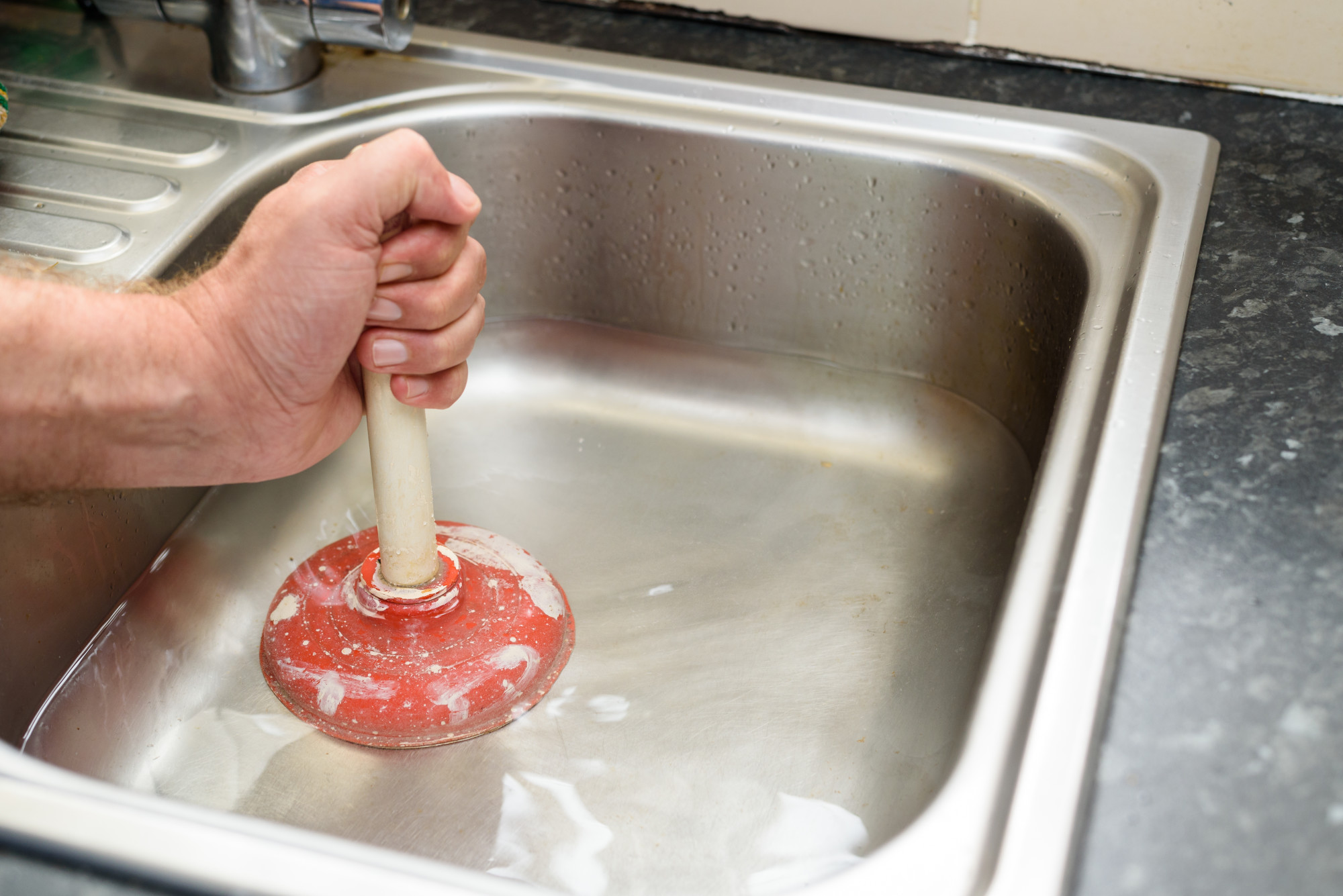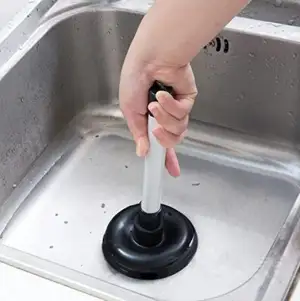Effective Plungers and Drain Cleaner Utilization: Essential Advice
Effective Plungers and Drain Cleaner Utilization: Essential Advice
Blog Article
This great article on the next paragraphs in relation to How to Use a Plunger to Unclog a Toilet or Drain is especially remarkable. Don't bypass it.

Introduction
Correct maintenance of household drains pipes is vital for stopping clogs and making sure smooth water circulation. One of the secret devices in every home owner's toolkit is the plunger, together with different drainpipe cleansers made to tackle stubborn clogs efficiently. This post discovers just how to make use of bettors and drainpipe cleansers successfully to maintain your drains streaming freely.
Section 1: Understanding Bettors
Sorts of Plungers
There are a number of kinds of plungers available, each made for various kinds of drains and blocks. The most typical kinds consist of cup bettors, flange plungers, and accordion bettors.
Just How Plungers Work
Plungers work on the concept of producing stress and suction to remove clogs. When effectively applied over a drainpipe, they create a vacuum cleaner that can pull out particles or separate blockages.
Picking the Right Plunger
Choosing the appropriate plunger relies on the kind of drainpipe and the nature of the clog. Mug bettors are suitable for sinks and bathtubs, while flange plungers are better fit for commodes due to their design.
Typical Errors with Bettors
Staying clear of these blunders ensures effective plunging: incorrect seal around the drain, inadequate force, and unclear surrounding debris.
Section 2: Using Plungers Efficiently
Preparation
Before diving, make certain the bettor covers the drain completely and forms a limited seal. Clear any type of visible debris around the drainpipe opening.
Technique
Begin with mild plunging activities to construct suction. Rise pressure slowly, using a stable rhythm. Repeat as necessary till the drain gets rid of.
Fixing Tips
If plunging does not work, attempt changing the seal, applying oil jelly for a better seal, or making use of a different kind of plunger.
Area 3: Understanding Drain Cleaning Company
Kinds Of Drainpipe Cleaners
Drain cleansers can be chemical or chemical. Chemical cleaners make use of strong chemicals to dissolve obstructions, while chemical cleaners use natural enzymes to break down raw material.
Just How Drainpipe Cleaners Work
Chemical cleaners react with obstructions to liquify them, while chemical cleansers break down natural products like hair and grease without harming pipes.
Safety Factors to consider
Constantly put on handwear covers and eye protection when using chemical drainpipe cleansers. Make certain appropriate ventilation and adhere to maker directions very carefully.
Eco-Friendly Alternatives
Think about using vinegar and cooking soda or enzyme-based cleansers for green alternatives that are much safer for pipelines and the atmosphere.
Area 4: Utilizing Drain Cleaning Company Efficiently
Application Strategies
Pour chemical cleansers directly into the drainpipe opening. Permit them to help the advised time before flushing with warm water. Chemical cleaners ought to sit over night.
Safety measures
Avoid blending different kinds of cleaners, as this can generate harmful fumes. Never ever utilize chemical cleaners along with a bettor, as splashing can take place.
Dealing With Stubborn Clogs
For consistent clogs, think about utilizing a plumbing serpent or calling an expert plumbing to prevent damage to pipelines.
Final thought
In conclusion, recognizing how to utilize bettors and drain cleaners successfully is essential for preserving healthy plumbing systems. By choosing the right devices and techniques, home owners can deal with small obstructions and stop major plumbing concerns down the line.
How To Properly Use A Plumbing Snake To Clear Drains
When any drain clogs in our home arise, we tend to gravitate toward the plunger and little else. In cases where the plunger and its vacuum-created pressure are not able to clear clogs, many immediately move to harmful chemicals or simply call their plumber to fix the issue.
we’re happy to help with all drain cleaning needs and concerns. This includes informing you on a few other home remedies you may have at your disposal for minor to moderate clogs, one of which is the use of a plumbing snake. Many people have never used one of these before – let’s go over the steps to take when your drain clogs and you have a plumbing snake available.
Attempt Plunger Use
The first step here, as we noted above, should indeed be to grab your plunger when you notice a drain clog and attempt to resolve it this way. If you’re unsure how to use a particular type of plunger, our plumbers can answer any questions you have. If this doesn’t do the trick, however, you move on to the snake.
Locate And Prepare Snake
A plumbing snake is a metal or plastic device that’s generally about a quarter of an inch thick. It’s design with significant extensions, meant to reach down into your clogged drain and push the clog out. Snakes also contain drain augers that will latch onto and push stubborn blockages.
If your plunger doesn’t clear a clog, locate your snake and bring it to the drain in question. We also recommend keeping a bucket nearby to collect the clog once you pull it out, plus we’d advise wearing goggles and possibly protective gloves.
Feed Snake
Once you’re ready to go, feed the snake slowly down the drain, using the crank device it comes with to keep it moving until it finds the clog. Once this happens, much of the clog will be latched onto the coil so you can pull it out, while the rest will simply break up and flow downward.
Detach Debris
Remove the snake slowly from the drain, and once you’ve done so, pick off any debris that’s stuck to the coil. This is another area where wearing gloves is a must.
Flush Drain
Finally, take a few minutes to ensure the snake has done its job correctly. If you’ve been using it on a toilet, flush the toilet a couple times and make sure everything flows well. If you’ve used it on a different drain, flush it with some room temperature water.
https://www.mybuddytheplumber.com/blog/how-to-properly-use-a-plumbing-snake-to-clear-drains/

Application Strategies
Pour chemical cleansers directly into the drainpipe opening. Permit them to help the advised time before flushing with warm water. Chemical cleaners ought to sit over night.
Safety measures
Avoid blending different kinds of cleaners, as this can generate harmful fumes. Never ever utilize chemical cleaners along with a bettor, as splashing can take place.
Dealing With Stubborn Clogs
For consistent clogs, think about utilizing a plumbing serpent or calling an expert plumbing to prevent damage to pipelines.
Final thought
In conclusion, recognizing how to utilize bettors and drain cleaners successfully is essential for preserving healthy plumbing systems. By choosing the right devices and techniques, home owners can deal with small obstructions and stop major plumbing concerns down the line.
How To Properly Use A Plumbing Snake To Clear Drains
When any drain clogs in our home arise, we tend to gravitate toward the plunger and little else. In cases where the plunger and its vacuum-created pressure are not able to clear clogs, many immediately move to harmful chemicals or simply call their plumber to fix the issue.
we’re happy to help with all drain cleaning needs and concerns. This includes informing you on a few other home remedies you may have at your disposal for minor to moderate clogs, one of which is the use of a plumbing snake. Many people have never used one of these before – let’s go over the steps to take when your drain clogs and you have a plumbing snake available.
Attempt Plunger Use
The first step here, as we noted above, should indeed be to grab your plunger when you notice a drain clog and attempt to resolve it this way. If you’re unsure how to use a particular type of plunger, our plumbers can answer any questions you have. If this doesn’t do the trick, however, you move on to the snake.
Locate And Prepare Snake
A plumbing snake is a metal or plastic device that’s generally about a quarter of an inch thick. It’s design with significant extensions, meant to reach down into your clogged drain and push the clog out. Snakes also contain drain augers that will latch onto and push stubborn blockages.
If your plunger doesn’t clear a clog, locate your snake and bring it to the drain in question. We also recommend keeping a bucket nearby to collect the clog once you pull it out, plus we’d advise wearing goggles and possibly protective gloves.
Feed Snake
Once you’re ready to go, feed the snake slowly down the drain, using the crank device it comes with to keep it moving until it finds the clog. Once this happens, much of the clog will be latched onto the coil so you can pull it out, while the rest will simply break up and flow downward.
Detach Debris
Remove the snake slowly from the drain, and once you’ve done so, pick off any debris that’s stuck to the coil. This is another area where wearing gloves is a must.
Flush Drain
Finally, take a few minutes to ensure the snake has done its job correctly. If you’ve been using it on a toilet, flush the toilet a couple times and make sure everything flows well. If you’ve used it on a different drain, flush it with some room temperature water.
https://www.mybuddytheplumber.com/blog/how-to-properly-use-a-plumbing-snake-to-clear-drains/

As a serious reader on A Guide to Plungers (and How to Use Them), I imagined sharing that short article was really helpful. Do you know about another person who is excited about the niche? Feel free to promote it. Many thanks for your time invested reading it.
Click Here Report this page